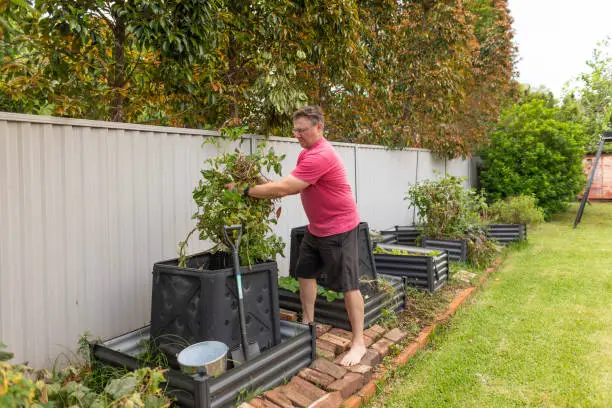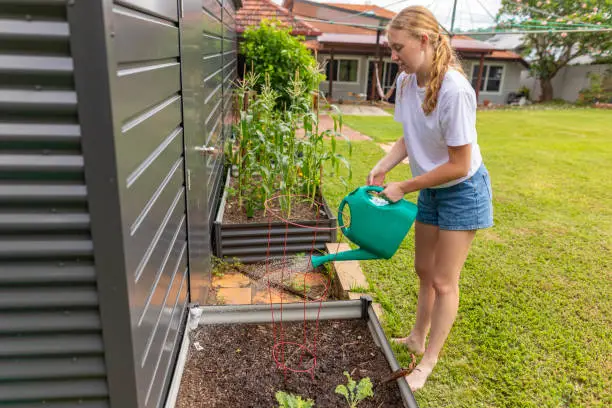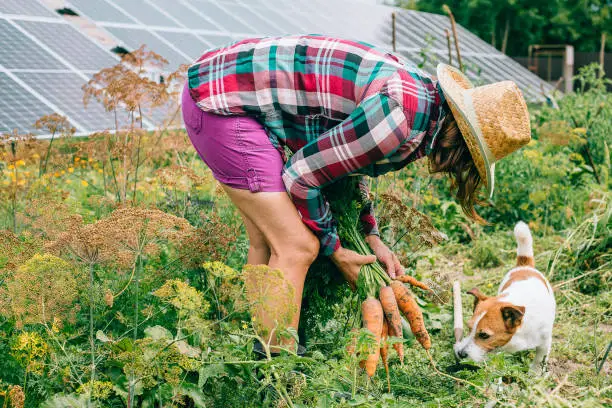Solar Power Basics for Homesteaders: Guiding Sustainable Living
Start your self-reliance and sustainability journey with backyard homesteading. Solar electricity is one of several ways to gain independence. This revolutionary energy solution lets homesteaders harness the sun’s plentiful power for sustainable and affordable renewable energy. Understanding solar power basics is vital for everyone who wants to make their homestead a sustainable living demonstration as the globe moves toward greener alternatives.

Solar power’s simplicity and ability to reduce fossil fuel use make it beautiful. The ramifications for homesteaders are enormous, as it enables clean, renewable energy for homes, businesses, and irrigation systems.
Understanding your energy needs is crucial to choosing the correct solar power configuration. First, examine your homestead’s daily and seasonal energy use. Location, sun exposure, and solar panel tilt all affect efficiency. Installation isn’t enough you must integrate panels into your homesteading lifestyle to match the natural rhythms of your environment.
Solar integration typically occurs in grid-tied or off-grid systems. Grid-tied systems allow homesteaders to feed excess energy into the grid and receive utility credits. This symbiotic relationship lowers energy prices and promotes renewable energy. Homesteaders value security and autonomy; thus, this independence fits.
Solar thermal systems have developed with solar power technology. Unlike photovoltaic systems, solar thermal systems heat water or air for homes and greenhouses. This method makes heating and hot water affordable, lowering the homestead’s carbon footprint.
Installation financing and incentives can lower the entry barrier for solar power. Tax incentives, rebates, and finance encourage solar energy adoption in many regions. These financial systems can make the initial investment more reasonable, enabling long-term savings and environmental advantages.
Planning and experience are needed for solar power system installation and maintenance. While a DIY approach may appeal to daring homesteaders, consulting pros can ensure your system is efficiently constructed and complies with local standards. Periodic, modest maintenance is necessary to maintain system efficiency. Solar panel cleaning and connection checks can prolong investment life.
Solar electricity represents values beyond technical and financial issues. It shows land stewardship and devotion to future generations. Solar electricity decreases the homestead’s environmental impact and promotes a community’s embrace of sustainable energy.
When adding solar power to the homestead, consider the broader ecosystem of sustainable practices. Solar energy can be enhanced by rainwater gathering, composting, and organic gardening for a holistic approach to sustainable living. The synergy between practices boosts homestead efficiency and deepens land connection.
Solar power is a practical and philosophical choice that embodies homesteading’s resilience, sustainability, and harmony with nature. As solar technology advances, homesteaders can innovate and adapt to incorporate renewable energy into their daily lives.
Learning solar power basics is just the start. The real magic is applying this information to make self-sufficiency a reality. Solar electricity can help homesteaders save money, minimize their environmental impact, and promote sustainability. Sunlight is free, but we must use it wisely to create a brighter, greener future on our homesteads and beyond.
Innovative DIY Wind Turbines for Sustainable Living
Backyard homesteading frequently involves lush vegetable gardens, clucking poultry, and solar panels. The wind turbine is a less visible but equally transformational component in the sustainable homestead. These giant renewable energy generators may turn a brisk breeze into a tremendous electricity stream, challenging the energy grid and homesteaders. While harnessing the wind may seem overwhelming, DIY wind turbine technology has made renewable energy accessible to resourceful homesteaders.
The ancient wind has powered ships, ground food, and today lights homes. The theory behind wind turbines is simple but profound. A turbine converts wind energy into electricity, which can power a home, charge batteries, or feed back into the grid. This allows homesteaders to save money, reduce energy use, and help the environment.
Understanding your wind resource is the first step to building a DIY wind turbine. Homesteaders must learn the wind’s patterns like farmers do to estimate crop yields. Wind charts and anemometers can help you decide if your site has enough wind for a turbine. The correct wind type and amount are essential for the perfect site. Turbulence can reduce a wind turbine’s efficiency as much as a calm day; therefore, open, unobstructed spaces are ideal for wind power.
Creative inspiration begins upon choosing a turbine. There are several alternatives, from sleek vertical-axis turbines that resemble modern art to propeller-like horizontal-axis turbines. Vertical-axis turbines are better at handling turbulent winds, while horizontal-axis turbines are more efficient in steady winds. DIY is most evident when homesteaders build their turbines from scratch or reuse resources to create a bespoke solution.
It may seem like a job for an engineer, yet anyone can learn and build a wind turbine. Wood, metal, or PVC pipes can make the wind-capturing rotor. The turbine’s generator converts rotor motion into energy. Here, DIYers may use engines from outdated appliances or cars. A reused flagpole or custom-welded tower can raise the turbine over barriers to catch the best winds.
Wiring and integrating the turbine into your homestead’s energy infrastructure may take much work. Some off-grid systems store energy in batteries, while grid-tied systems let you sell extra power to the utility. This phase involves careful compliance with local regulations and professional guidance. Still, the reward is a genuinely autonomous energy source that can power during outages, lower energy bills, and minimize your carbon footprint.
Maintenance silently prolongs wind turbine life. Moving parts can be checked often to avoid costly repairs. A careful homesteader can balance blades, lubricate bearings, and check the electrical system. The homesteader-turbine relationship, where care meets craft, embodies backyard homesteading’s self-reliance.
Wind energy represents independence and environmental responsibility beyond the mechanical and technological. Homesteading values sustainability and resilience, and wind turbines, especially DIY models, reflect these values. They can help us break away from fossil fuels, reduce greenhouse gas emissions, and power our homes and lifestyles with clean, renewable energy.
Wind energy on a homestead allows education and community involvement. By building a turbine, families may learn about physics, electricity, and environmental responsibility. Your wind turbine may motivate neighbors to pursue wind energy, spreading its benefits beyond your land.
Homesteading is evolving, and wind turbines are cutting-edge sustainable living. The wind reminds us of our dynamic relationship with nature and its seasonal and everyday changes. DIY wind turbines allow homesteaders to power their houses, empower their communities, and help the environment.






Leave a Reply